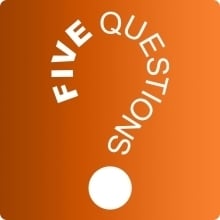You have /5 articles left.
Sign up for a free account or log in.

Watson (left) and Bowen have been working together for so long they finish each other’s sentences.
Pierce Kuchle/Johns Hopkins University Press

Many professors are too overworked, overwhelmed and frankly skeptical about AI to spend time digging into how it can be used. In Teaching With AI: A Practical Guide to a New Era of Human Learning, authors José Antonio Bowen and C. Edward Watson offer wisdom and guidance to those who don’t know Claude from Gemini. Bowen, a former president of Goucher College, and Watson, the vice president for digital innovation at the American Association of Colleges and Universities, have worked together long enough that they finish each other’s sentences. Their answers have been edited for length and clarity.
1. A lot of professors seem hesitant to embrace AI in their classrooms. Why is it important for educators to engage with these tools now?
Watson: We think nearly everyone would agree that at least part of the purpose of higher education, regardless of institution type, is to prepare students for life after graduation. AI (and its critical use) is becoming essential for graduates almost immediately in their careers and maybe also for a thriving life. Higher education currently has a list of learning outcomes that are seen as essential for all students to achieve. Those include critical thinking, writing and teamwork. Given the rise of AI, an argument is now emerging that suggests AI literacy is essential learning for college students, too.
2. What about professors who prefer to wait and see how AI develops?
Bowen: The resistance to AI mirrors previous responses to Wikipedia and the internet. The longer academia ignored Wikipedia, the longer it took to respond effectively. Today, just as you can’t refuse to use a word processor or the internet in the workplace, professionals who effectively use AI will have better career opportunities.
Students are already using AI. If we don’t help them to learn to use it responsibly and well, then who will? To do that we need to have some experience ourselves, but that also gives us an opportunity to demonstrate to our students that learning is indeed a lifelong pursuit. This is a great opportunity to engage with our students in what is an important and complex problem.
3. How do you address concerns about AI’s potential for enabling academic dishonesty?
Watson: Rather than focus on surveilling our students for cheating, we might examine whether we have enough variety in our pedagogical approaches. We need to engender a mindset within our students that AI doesn’t do the work for them; rather, it works with them. If you use AI poorly (just copying and submitting the work) you will not have developed any skills that will get you a job. Employers are already doing that and starting to automate that. At the conclusion of any collaboration with AI, students should be able to examine their work and recognize their own contributions alongside AI assistance. Being able to make AI output better is a key dimension of AI literacy. Being able to articulate how you did that is now a standard interview question for employment.
4. What about concerns regarding AI’s reliability and quality? People who have not used recent versions of ChatGPT say it’s easy to tell when something was written by AI.
[uproarious laughter]
Bowen: When AI produces subpar or uninteresting results, the issue often lies with how we’re using it rather than the technology itself. Success with AI tools requires asking better questions (which is more than just prompt engineering) and evaluating the quality of the answers. Sound familiar? This is something that’s already a core value of higher education. All of us are already teaching AI literacy skills in a way.
5. Why should people read this book?
Watson: We’re concerned that if higher education doesn’t take the lead in this area, private sector companies offering AI credentials will fill the void. Academia has a unique opportunity and responsibility to incorporate discussions of ethics and best practice into AI education. We must be mindful of preserving human creativity and ideas. AI should serve as an aid to creativity rather than a replacement for human thought.
Bowen: Learning how AI might help faculty with tedious tasks (like accreditation analysis and reports) can change how we see its potential. New technologies almost always offer both problems and potential. If our only experience of AI is either poor or unethical use by students, we may misjudge the transformation that is coming.
We wrote the book in order to help people start small and build confidence gradually. Professors should begin by experimenting with AI in ways that fit their specific disciplines and expertise, rather than try to master everything at once. The goal is to understand how these tools can enhance existing teaching methods without replacing them.
Watson: The speed and scope of AI adoption are unprecedented in educational technology. Rather than resist this change, educators should focus on thoughtful integration that preserves the core values of higher education while preparing students for a future where AI literacy will be essential.
Bowen: Because things change so quickly, we maintain this page (updated almost daily) of both (1) links and explanations to essential AI tools and (2) ideas for prompts and things you might do with AI. Start by clicking on three or four new tools and trying the same prompt in each.









